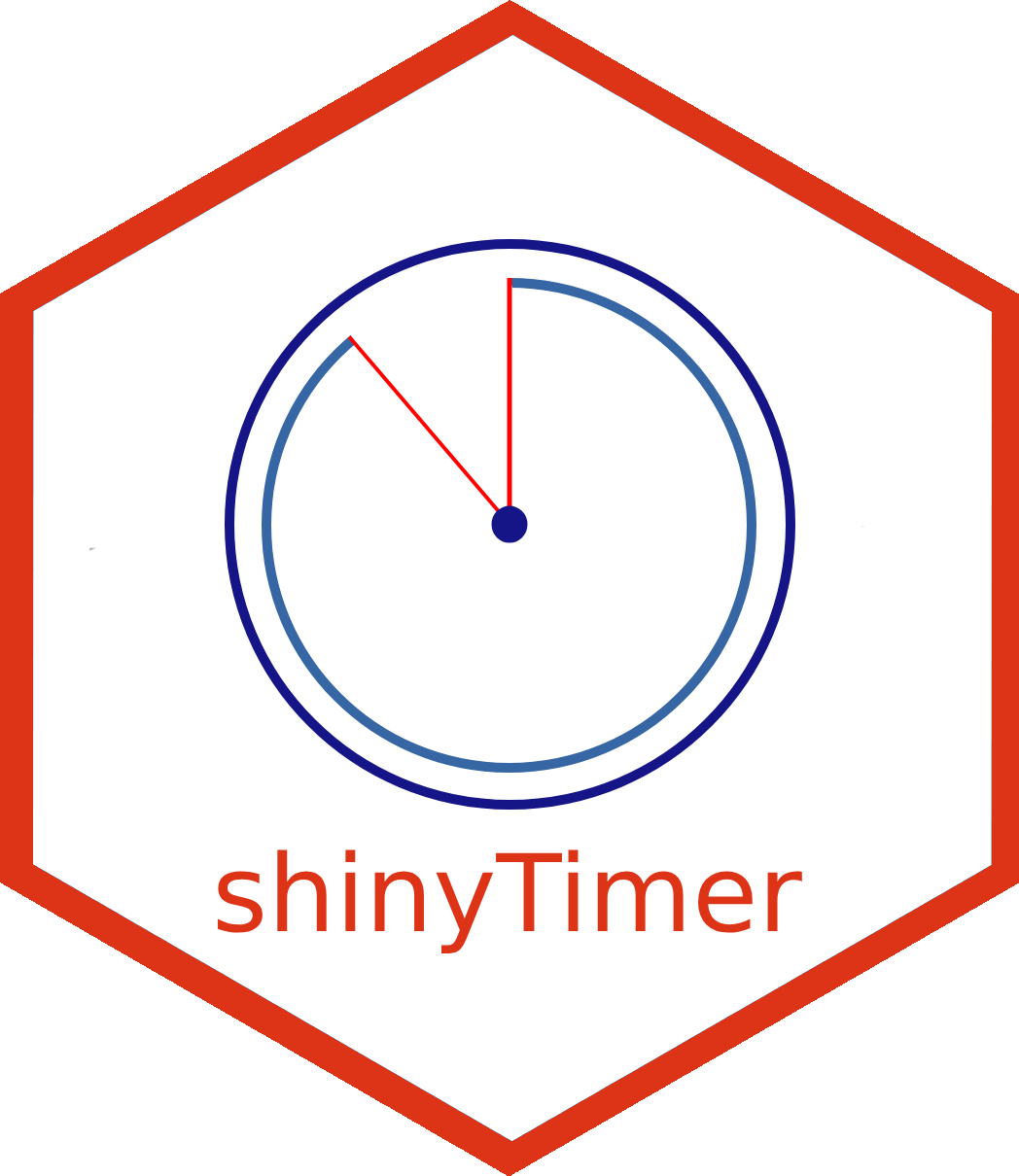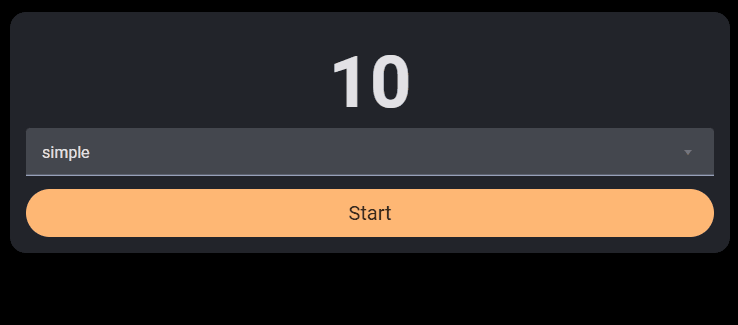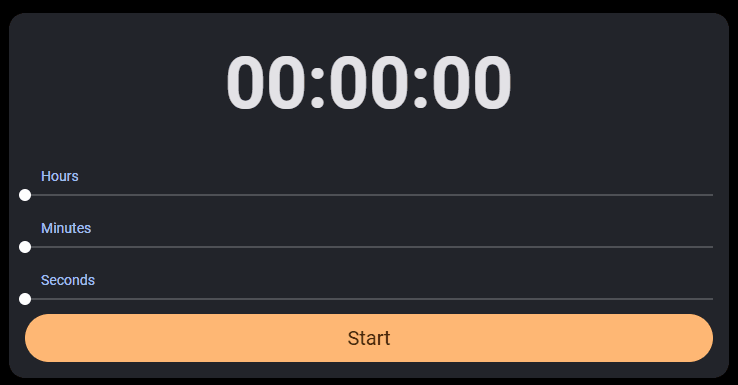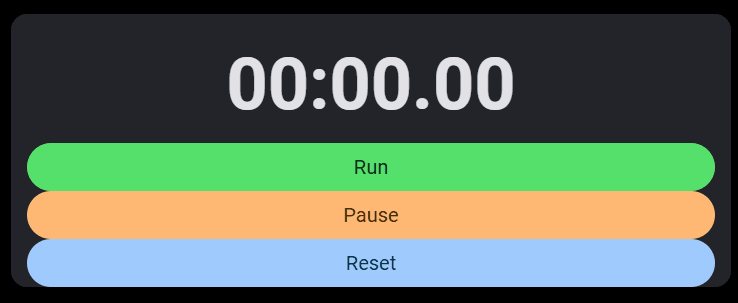
The hardware and bandwidth for this mirror is donated by dogado GmbH, the Webhosting and Full Service-Cloud Provider. Check out our Wordpress Tutorial.
If you wish to report a bug, or if you are interested in having us mirror your free-software or open-source project, please feel free to contact us at mirror[@]dogado.de.

shinyTimer allows you to easily integrate a countdown
timer into Shiny UI, providing real-time updates and server notification
when the timer completes.
In examples below I make use of shinyMobile framework.

Development version:
# install.packages("remotes")
remotes::install_github("maciekbanas/shinyTimer")To get things work you need to add in your UI
shinyTimer() and trigger an action in your
server (e.g. countDown()).
Try it out:
ui <- shinyMobile::f7Page(
shinyMobile::f7Card(
shinyTimer::shinyTimer(
inputId = "shiny_timer",
seconds = 10L,
type = "simple",
style = "font-weight: bold; font-size: 72px; text-align:center"
)
)
)
server <- function(input, output, session) {
shiny::observe({
shinyTimer::countDown(
inputId = "shiny_timer"
)
})
}
shinyApp(ui, server)shinyTimer() is by default a simple one,
but you can switch to clock types by passing mm:ss,
hh:mm:ss or mm:ss.cs (with
centiseconds) to type parameter.

You can either set seconds, minutes or
hours.

Once the timer reaches 0 JavaScript sends
timer_done value to Shiny input. You can use
it to trigger an action (see example below).

ui <- shinyMobile::f7Page(
shinyMobile::f7Card(
shinyTimer::shinyTimer(
inputId = "shiny_timer",
seconds = 10L,
type = "simple",
style = "font-weight: bold; font-size: 72px; text-align:center"
),
shinyMobile::f7Button(
"start_timer",
label = "Start",
size = "large",
rounded = TRUE,
color = "orange"
) |>
htmltools::tagAppendAttributes(
style = "font-size:20px;"
)
)
)
server <- function(input, output, session) {
shiny::observeEvent(input$start_timer, {
shinyTimer::countDown("shiny_timer")
})
shiny::observeEvent(input$timer_done, {
shinyMobile::f7Dialog(
id = "dialog",
title = "Time's Up!",
text = ""
)
})
}
shinyApp(ui, server)You can also use shinyTimer as a stopwatch. Simply
trigger shinyTimer in your server with
countUp(). You can also pauseTimer() and
resetTimer().

ui <- shinyMobile::f7Page(
shinyMobile::f7Card(
shinyTimer::shinyTimer(
inputId = "shiny_timer",
seconds = 0L,
type = "mm:ss.cs",
style = "font-weight: bold; font-size: 72px; text-align:center"
),
shiny::br(),
shinyMobile::f7Block(
shinyMobile::f7Button(
"start_timer",
label = "Run",
size = "large",
rounded = TRUE,
color = "green"
) |>
htmltools::tagAppendAttributes(
style = "font-size:20px;"
),
shinyMobile::f7Button(
"pause_timer",
label = "Pause",
size = "large",
rounded = TRUE,
color = "orange"
) |>
htmltools::tagAppendAttributes(
style = "font-size:20px;"
),
shinyMobile::f7Button(
"resume_timer",
label = "Reset",
size = "large",
rounded = TRUE,
color = "blue"
) |>
htmltools::tagAppendAttributes(
style = "font-size:20px;"
)
)
)
)
server <- function(input, output, session) {
shiny::observeEvent(input$start_timer, {
shinyTimer::countUp("shiny_timer")
})
shiny::observeEvent(input$pause_timer, {
shinyTimer::pauseTimer("shiny_timer")
})
shiny::observeEvent(input$resume_timer, {
shinyTimer::resetTimer("shiny_timer")
})
}
shinyApp(ui, server)These binaries (installable software) and packages are in development.
They may not be fully stable and should be used with caution. We make no claims about them.
Health stats visible at Monitor.